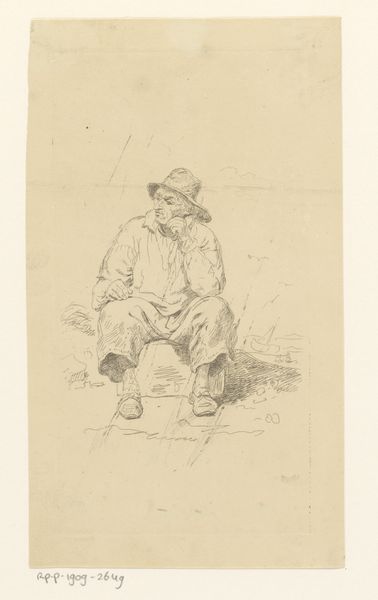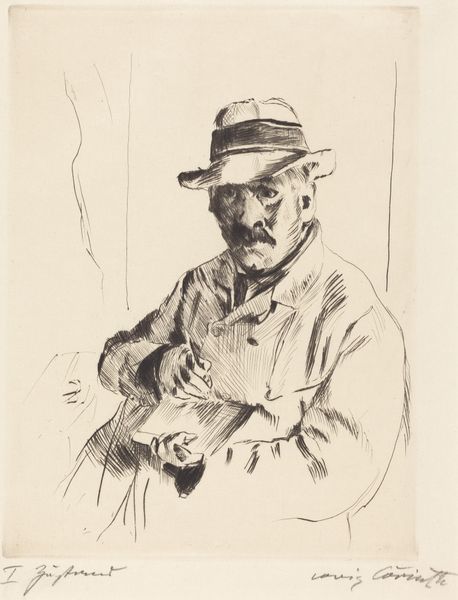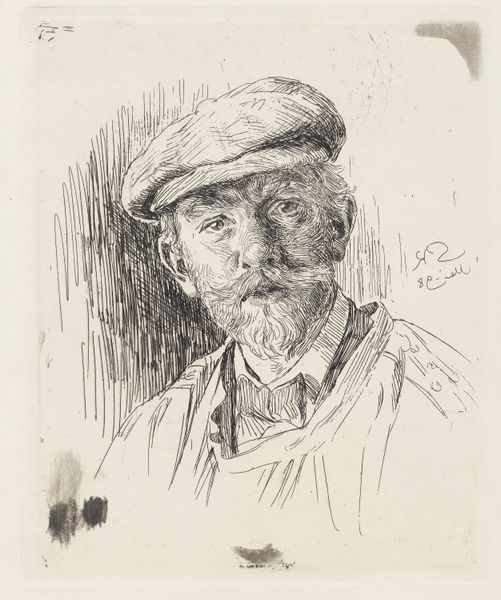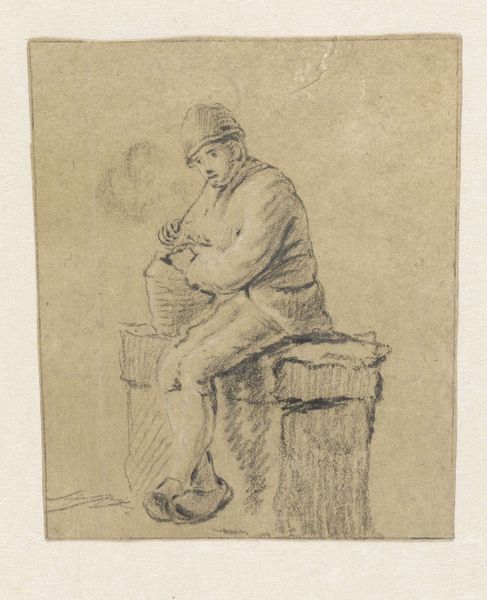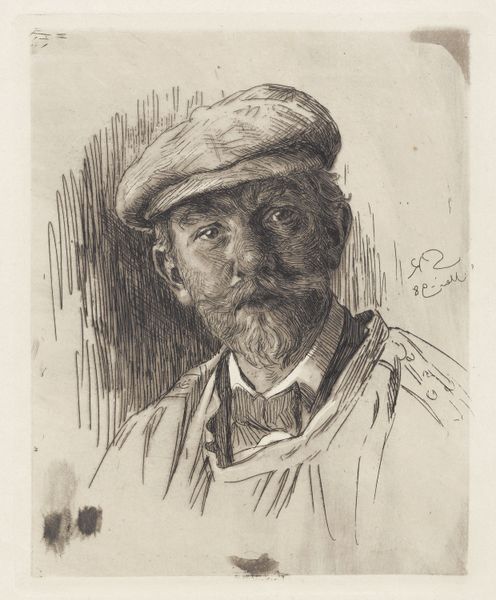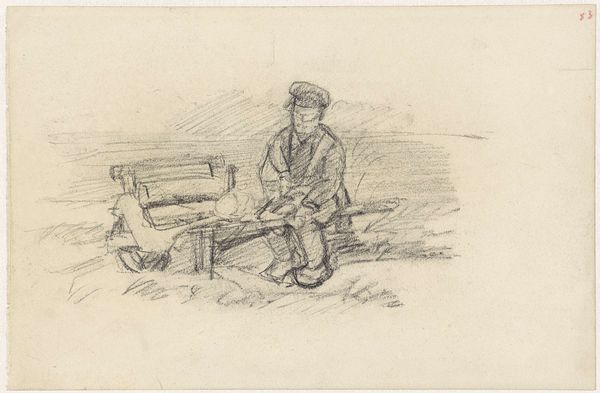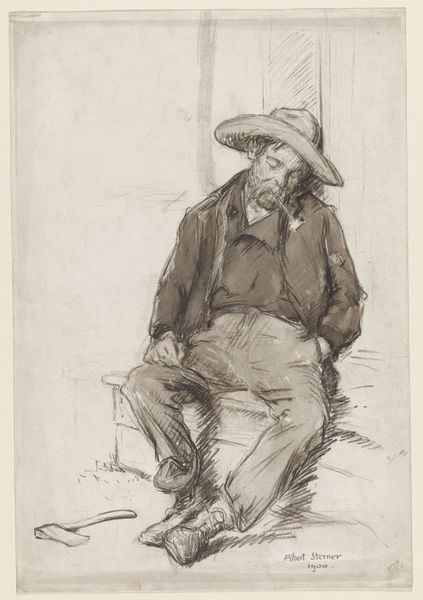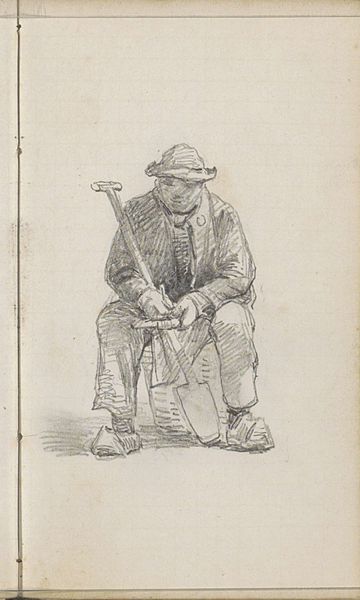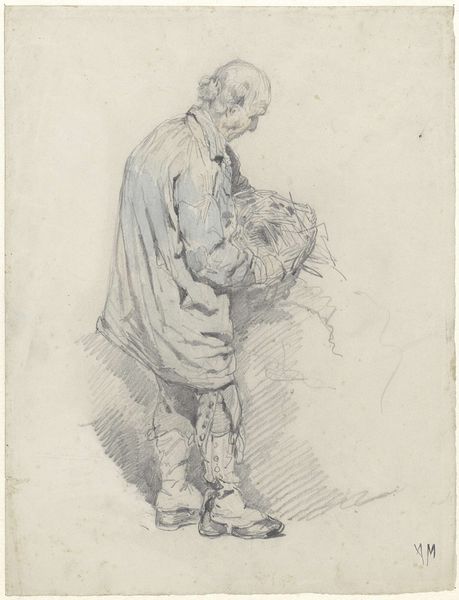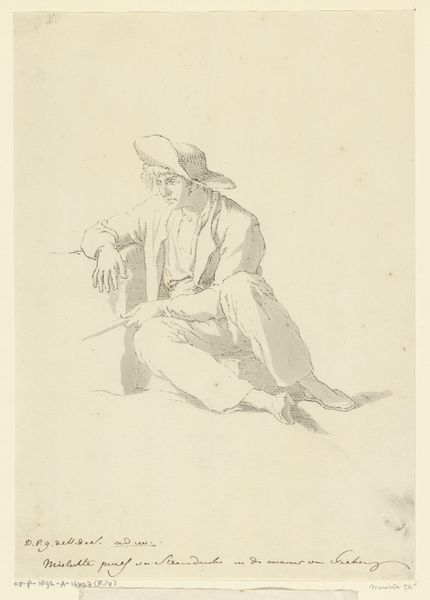
drawing, pencil
#
portrait
#
drawing
#
impressionism
#
pencil sketch
#
figuration
#
pencil
#
realism
Dimensions: height 286 mm, width 221 mm
Copyright: Rijks Museum: Open Domain
Curator: This sketch is by Anthon Gerhard Alexander van Rappard, titled "Schoenmaker"– or, in English, "Shoemaker." It was made sometime between 1868 and 1892, using pencil. Editor: Immediately, the drawing exudes a feeling of quiet contemplation, the man completely absorbed in his work, hunched slightly, a study in focused energy. There’s a palpable sense of the shoemaker’s world captured with a deft hand. Curator: Rappard really zeroes in on the process, doesn’t he? Look at how the lines suggest the rough texture of the shoemaker's apron and the tools of his trade. The hatching creates a sense of depth, of lived-in space and honest labour. Editor: Yes, I see it—but more than just texture, there's almost a tenderness in how the artist depicts him. The softened, obscured facial features invites us to consider what's beneath the surface: the skill, the long hours, the pride taken in a craft. Curator: Pride yes, but perhaps also hardship. Rappard and van Gogh were correspondents and colleagues, and this aligns with the broader Realist movement. They aimed to depict everyday life as it truly was, shorn of romanticization, revealing the gritty realities of labour. Editor: You know, considering it’s just a pencil drawing, there’s an amazing density to it. He really captures the weight and solidity of the form. It almost transcends its medium. I keep wanting to reach out and touch the leather. Curator: Rappard used a minimal palette and an economy of line here to focus attention on form and detail. See that little doodle to the right—almost as a technical aside on holding the shoemaking tools. He invites the viewer to understand how things are constructed, physically and socially. Editor: Absolutely. Thinking about the social context, one is immediately reminded of how far removed we are from that kind of manual creation today. It becomes a potent symbol of the transition to mass production, doesn't it? The artwork encapsulates the tension between handcrafted tradition and the industrializing world. Curator: Indeed. And on closer inspection, even within such limited means, there is great depth of expression and reflection. Editor: Exactly. "Schoenmaker" becomes less about depicting the shoemaker himself, and more a mirror reflecting broader economic and social transformations. The personal, the material, the political... all interwoven with such deceptively simple strokes.
Comments
No comments
Be the first to comment and join the conversation on the ultimate creative platform.
